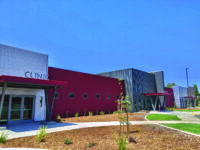Every day, we are inundated with information; often from two opposing sides. So, how do we teach kids to evaluate the information they read and hear, whether it comes from the media, our leaders, family, or friends?
Teaching kids to think critically is the solution and is crucial to their developing the ability to assess information and form logical conclusions about that which is presented to them. Fortunately, there are many ways parents can foster critical thinking in their kids and help them to develop problem-solving skills.
WAYS TO FOSTER CRITICAL THINKING
Ask Your Child Questions:
When your child asks a question or comments on a situation, look for opportunities to ask your child questions rather than immediately providing an answer. Open-ended questions offer your child the chance to think and assess. Examples of questions you can ask are: “What would you do to solve this problem?” or “I’d like to hear what you think.”
Once your child has answered, ask your child in a nonjudgmental tone to defend their answer. “Can you tell me why you think that?” or “What led you to this conclusion?” are a couple of questions to get your child to expound on their answer. Asking your child such questions provides your child additional opportunity to consider how they arrived at their answer. Through the process of thinking and talking about it, your child might discover any faulty thinking in your child’s initial response.
Regardless of whether or not your child’s thinking was correct or logical, praise your child for their effort in thinking their answer through. Then, if your child’s reasoning is faulty, gently explain what you believe and why to help correct your child’s assumptions or misconceptions.
Use Play as an Opportunity to Foster Critical Thinking:
Kids often learn best through play. Whatever they’re playing, encourage them to strategize. If it is a board game, have them think through their next move and consider what their opponent might do. If building with Legos, have your child consider how the placement of one piece will affect the placement of other pieces and the look or functionality of the structure.
Take Advantage of Everyday Tasks:
Giving kids real-life opportunities to problem solve is an excellent way to hone their critical thinking skills. When your child is doing chores, for example, allow your child to do it your child’s way a few times to see if your child can figure out the most efficient way to concur the task.
If after several tries it is taking your child longer than necessary or the job is not getting done as well as it could, ask your child to think of a way to do it that’s faster or does the job better. Allow your child time to think about it so your child can find a solution. If your child cannot come up with a solution, give your child a tip and ask your child how that might help.
Encourage Outside the Box Thinking:
Kids already have the innate ability to think outside the box, which is also known as divergent thinking. But as kids grow, thought becomes more convergent. A certain degree of convergent thinking is necessary, so we do not give the same weight to all possibilities. Still, a certain amount of divergent thinking is crucial to the ability to solve problems.
When the opportunity arises, ask your child to think of all the possible ways a problem might be solved or something can be done. Then ask your child to consider and weight out the pros and cons of each solution to determine which is best.
BOOKS THAT TEACH CRITICAL THINKING
The following books encourage kids to think critically and show them how to evaluate situations, examine beliefs, and understand the methods of science. Some of these books also contain activities to help kids hone their critical thinking skills.
How Come? Every Kid’s Science Questions Explained by Kathy Wollard and Debra Solomon: Grades 4 to 6.
Kids discover the answers to more than 200 mysteries and phenomena in this fun-filled book. They learn the secrets to why stones can skip across water rather than immediately sinking and whether running to shelter when it’s raining keeps you drier than walking.
Logic to the Rescue: Adventures in Reason by Kris Langman: Grades 5 to 9.
In this sword-and-sorcery fantasy story, kids learn about logical fallacies, how to test a hypothesis, and set up experiments in biology, chemistry, and physics.
An Illustrated Book of Bad Arguments by Ali Almossawi: Grades 7+.
This beautifully illustrated and handy book introduces readers to a variety of faulty arguments people use including ad hominem attacks, the straw man fallacy, slippery slope arguments, and more. Throughout the book, the characters commit every error in reasoning imaginable, thereby providing readers some clear examples of logic failures.
Flat Earth? Round Earth?
by Theresa Martin.
When a school teacher passes out clay spheres to the class to be decorated, one student crushes his, arguing the earth is flat. This leads to a trip to the principal’s office where the boy, unwilling to succumb to “common knowledge,” poses several arguments. The narrator then takes on the challenge of providing proof the earth is round. The book teaches kids the value of questioning and not taking things at face value.
Philosophy for Kids: 40 Fun Questions That Help You Wonder About Everything
by David White: Grades 4+.
In this interactive book, kids have the opportunity to grapple with philosophical questions that have been discussed and debated as far back as the ancient Greeks, right on through modern-day thought. Philosophy for Kids is filled with fun and exciting activities to help them understand philosophical concepts.
Bringing UFOs Down to Earth
by Philip J. Klass: Grades 4 to 7.
In this fun book, kids learn fascinating facts about UFOs and how UFO reports are investigated. They also learn about rational and scientific explanations for UFO sightings and reports.
How to Fake a Moon Landing: Exposing the Myths of Science Denial
by Darryl Cunningham: Grades 7+.
This book addresses eight hotly debated science topics in which the author discusses the research and current thinking on each issue. Readers discover how people on all sides of the issues manipulate information to suit their views. In the end, teens are armed with the needed information to draw conclusions on each topic.
How Do You Know It’s True? Discovering the Difference Between Science and Superstition
by Hy Ruchlis: Grades 7 to 10.
In examining a variety of superstitions, such as astrology and the unlucky number 13, the author addresses the problem that the nature of superstition is that it is unobservable. He also does an excellent job illustrating the dangers of magical thinking. The book helps readers walk away with a better understanding of science.
Nibbling on Einstein’s Brain: The Good, the Bad and the Bogus in Science
by Diane Swanson and Francis Blake: Grades 3 to 7.
In this book, kids learn how to tell the difference between good science and faulty. The author encourages critical thinking through a combination of fascinating fictitious scenarios and real-world examples. Nibbling on Einstein’s Brain includes fun activities to help kids develop critical thinking skills.






